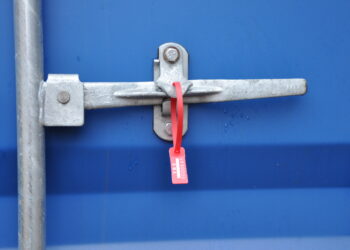ISO 17712-certified seals play a crucial role in maintaining the chain of custody for sensitive or high-value shipments within the global logistics and supply chain industry. These seals are specifically designed to enhance security, deter tampering, and ensure the integrity of goods throughout their journey from origin to destination. The ISO 17712 standard establishes requirements for high-security seals, outlining various specifications and testing procedures to ensure their effectiveness. Let’s delve into how ISO 17712-certified seals contribute to maintaining the chain of custody for such shipments.
1. Tamper-Evidence:
ISO 17712-certified seals are designed to be tamper-evident, which means any attempt to breach or manipulate the seal becomes immediately apparent. This feature is essential for maintaining the integrity of the shipment. If an unauthorized attempt is made to open or tamper with the container or cargo, the seal will show visible signs of tampering such as physical damage or a broken seal. This tamper-evident nature helps prevent unauthorized access and provides evidence of potential breaches.
2. Deterrence and Prevention:
The mere presence of an ISO 17712-certified seal acts as a deterrent against theft, tampering, and unauthorized access. Criminals are less likely to target shipments that are visibly secured with high-security seals due to the risk of detection and apprehension. This preventive aspect contributes to the overall security of the supply chain, minimizing the chances of disruptions and losses.
3. Verification and Authentication:
High-security seals come with unique identifiers, such as barcodes or serial numbers, which are difficult to replicate. This uniqueness allows for easy verification and authentication of the seal’s origin and integrity. Before accepting or releasing a shipment, authorized personnel can verify the seal’s authenticity by cross-referencing the seal number with relevant records. This process ensures that the cargo has not been tampered with en route.
4. Regulatory Compliance:
Many industries dealing with sensitive or high-value goods are subject to regulatory requirements regarding security measures. ISO 17712-certified seals provide a standardized solution that aligns with these regulations. By using certified seals, companies demonstrate their commitment to maintaining the chain of custody and complying with industry standards.
5. International Acceptance:
The ISO 17712 standard is internationally recognized, making it easier for shipments to cross borders and navigate through various jurisdictions. Customs and border control authorities often rely on certified seals as indicators of secure cargo. The use of certified seals can expedite clearance processes and reduce the likelihood of inspections or delays.
6. Accountability and Liability:
When sensitive or high-value shipments are in transit, multiple parties are involved, including shippers, carriers, and recipients. ISO 17712-certified seals establish a clear point of accountability. If a breach or tampering occurs, it becomes easier to identify where the breach might have taken place, facilitating investigations and potential liability claims.
7. Data Documentation:
Seal numbers and other relevant information are often recorded in shipping documents and records. This creates a paper trail that enhances transparency and accountability. In case of disputes or discrepancies, the recorded seal information can be used to reconstruct the chain of custody and determine when and where any potential breaches occurred.
Conclusion:
ISO 17712-certified seals play a vital role in maintaining the chain of custody for sensitive or high-value shipments by providing tamper-evident security, deterring theft and tampering, facilitating verification, ensuring regulatory compliance, enabling international acceptance, establishing accountability, and creating a documented record. These seals are a fundamental component of secure logistics operations, providing peace of mind to both stakeholders and customers while safeguarding valuable cargo throughout its journey.












